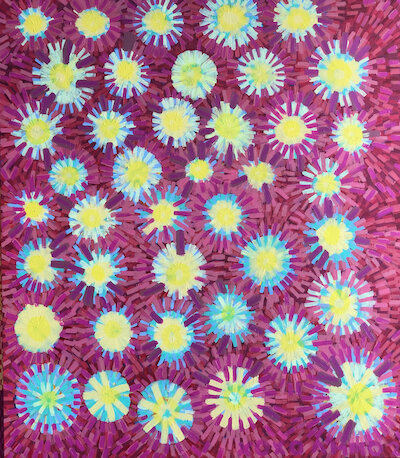
The paintings depicting radial patterns represent sparks from a gun, flowers to honor a loved one, surveillance on the border, and the energy that is expressed when a border is crossed, built or destroyed. I make paintings of chispas, or sparks, in response to the history of anti-Mexican violence in Texas. These paintings are a reflection of my energy and the energy exerted when a spark is made, and the positivity that is created within communities to shield one another from hostility, prejudice, judgement, or daily struggles.
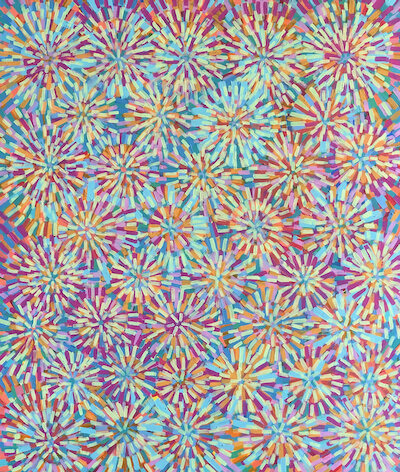
This painting was made with a few rules. I chose to use one brush size to make many marks that follow one radial shape or pattern. Keeping these things consistent allows me to explore the possibilities of color. The pink color scheme is a reference to my grandmother and the pink clothes that she wore, the pink bubble gum she gave us, the pink cake she loved and the pink roses in her garden. This painting is a reflection of my energy and the energy exerted when a spark is made. Chispas is a word for spark.

A painting to honor my family’s tradition of decorating our ancestor’s graves with the symbolic cempasuchil for Dia De Los Muertos.

Inspired by the satellite images of gas flaring in the Eagle Ford Shale in Texas.
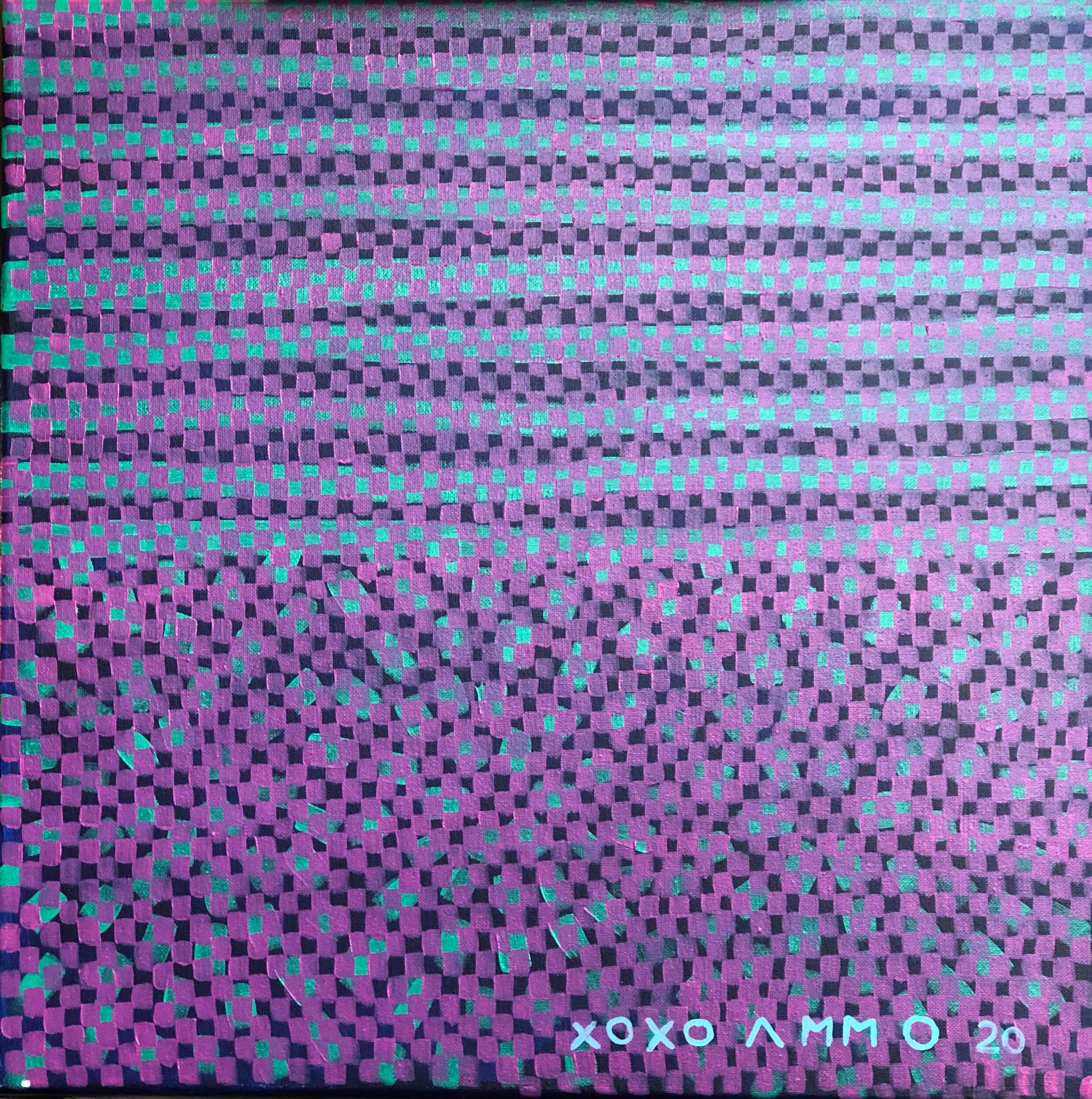
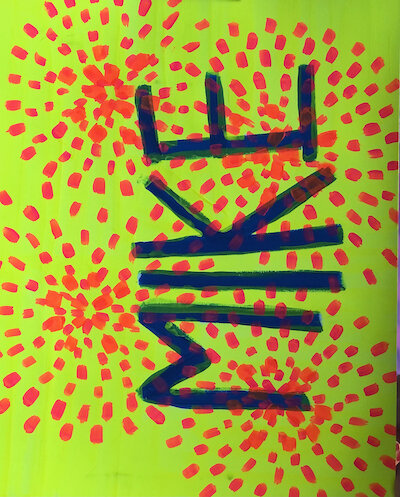
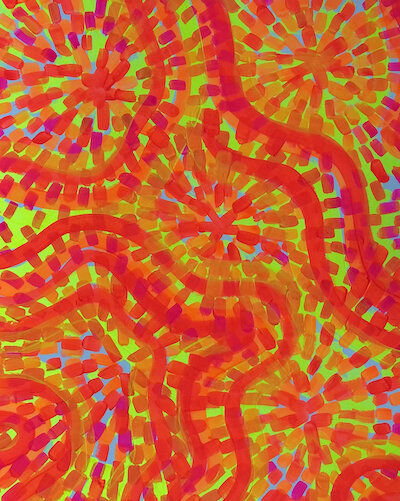


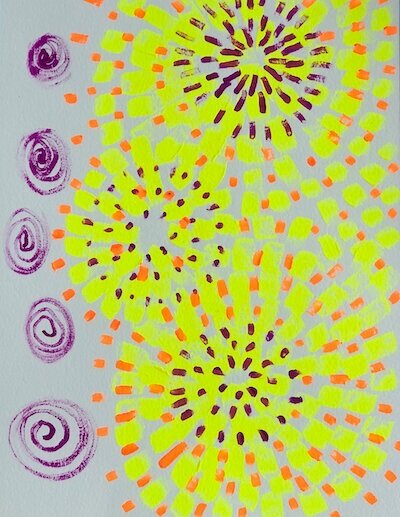
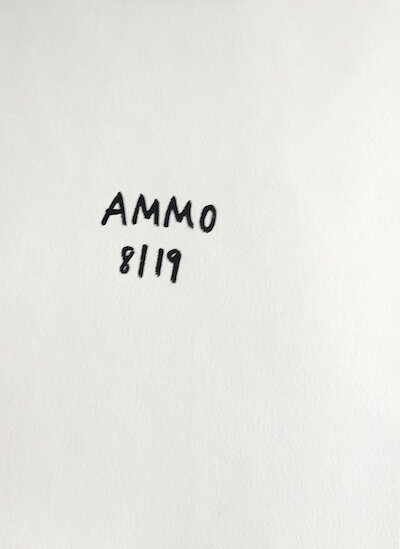



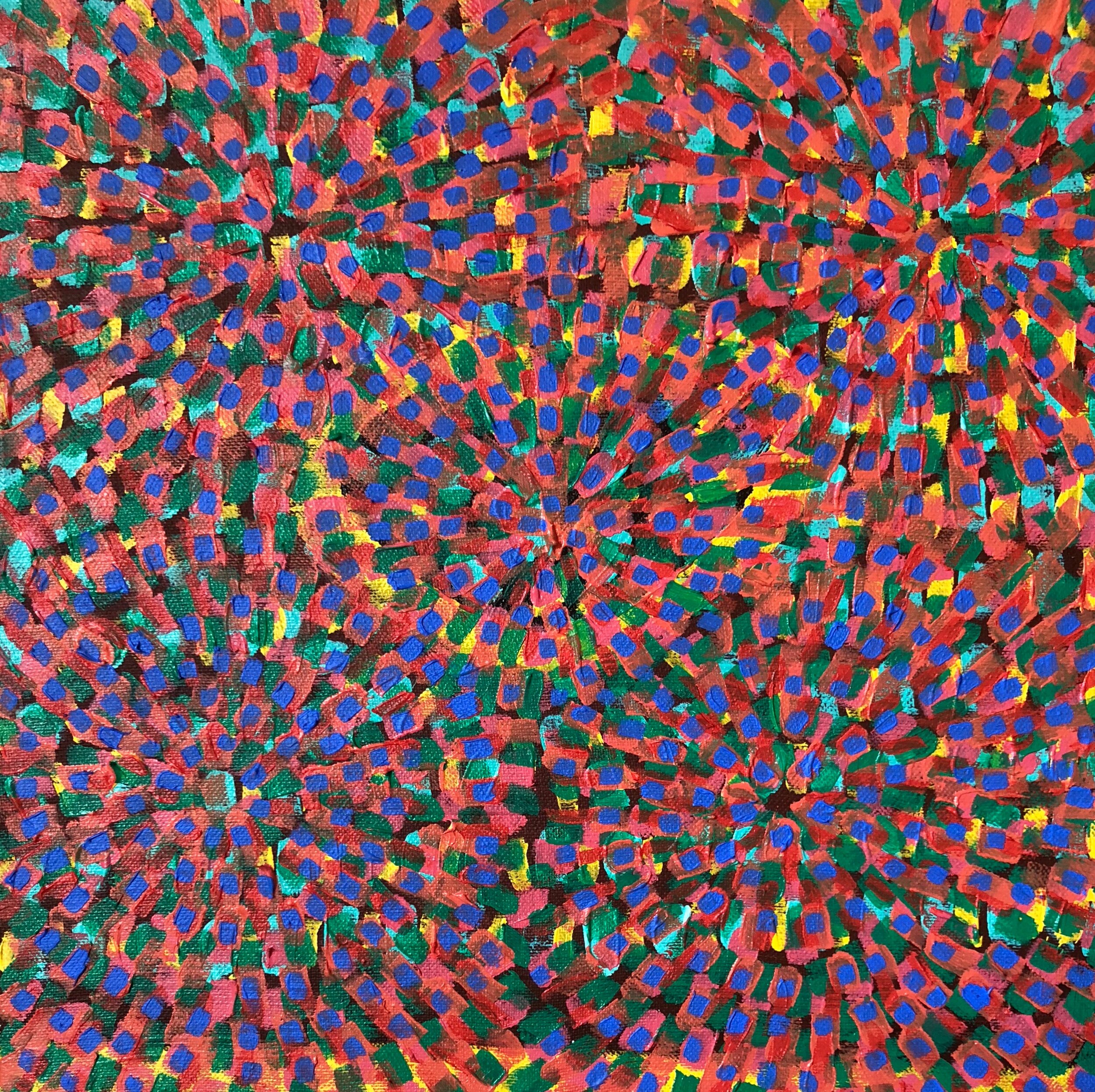

These acrylic paintings were created after the massacre in El Paso, Texas on August 3, 2019. A domestic terrorist traveled to El Paso to target Latinos he accused of invading America. With the rise of anti-Latino rhetoric from politicians and the rise of anti-Latino hate crimes in the United States, I, like so many Latinos, felt like a target. I painted a series of targets because I wanted to reflect on a climate in which anti-latino and anti-immigrant rhetoric was creating hostile and deadly situations for people in the United States.
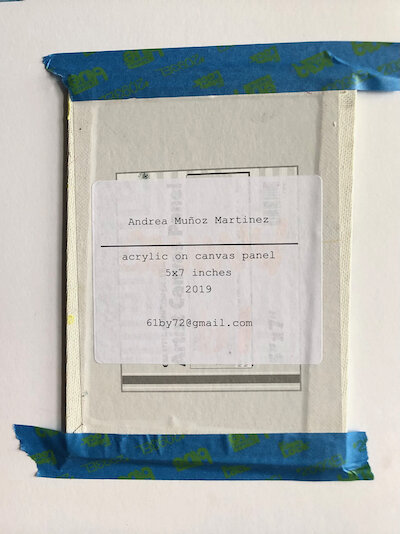
8 x 6 in. (8 x 10 in. with matte board), Acrylic on Canvas Board, 2019, $100
These acrylic paintings were created after the massacre in El Paso, Texas on August 3, 2019. A domestic terrorist traveled to El Paso to target Latinos he accused of invading America. With the rise of anti-Latino rhetoric from politicians and the rise of anti-Latino hate crimes in the United States, I, like so many Latinos, felt like a target. I painted a series of targets because I wanted to reflect on a climate in which anti-latino and anti-immigrant rhetoric was creating hostile and deadly situations for people in the United States.
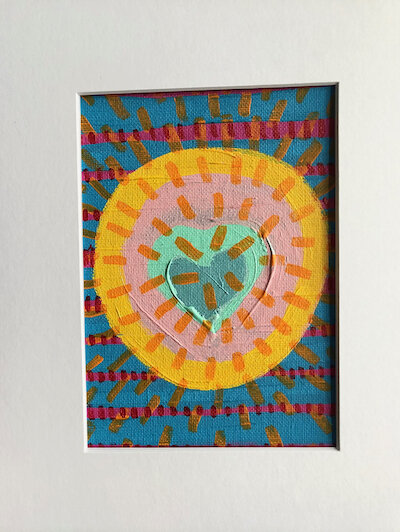
These acrylic paintings were created after the massacre in El Paso, Texas on August 3, 2019. A domestic terrorist traveled to El Paso to target Latinos he accused of invading America. With the rise of anti-Latino rhetoric from politicians and the rise of anti-Latino hate crimes in the United States, I, like so many Latinos, felt like a target. I painted a series of targets because I wanted to reflect on a climate in which anti-latino and anti-immigrant rhetoric was creating hostile and deadly situations for people in the United States.
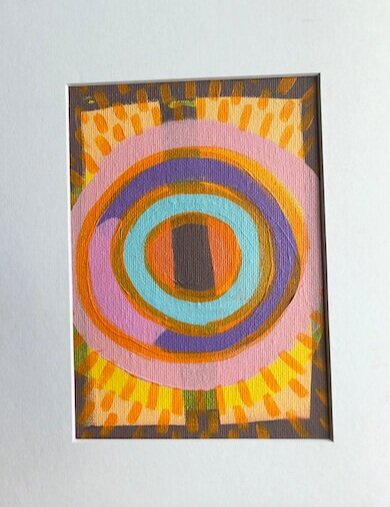
These acrylic paintings were created after the massacre in El Paso, Texas on August 3, 2019. A domestic terrorist traveled to El Paso to target Latinos he accused of invading America. With the rise of anti-Latino rhetoric from politicians and the rise of anti-Latino hate crimes in the United States, I, like so many Latinos, felt like a target. I painted a series of targets because I wanted to reflect on a climate in which anti-latino and anti-immigrant rhetoric was creating hostile and deadly situations for people in the United States.
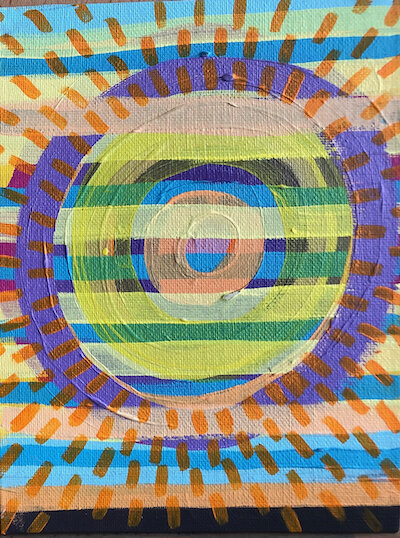
These acrylic paintings were created after the massacre in El Paso, Texas on August 3, 2019. A domestic terrorist traveled to El Paso to target Latinos he accused of invading America. With the rise of anti-Latino rhetoric from politicians and the rise of anti-Latino hate crimes in the United States, I, like so many Latinos, felt like a target. I painted a series of targets because I wanted to reflect on a climate in which anti-latino and anti-immigrant rhetoric was creating hostile and deadly situations for people in the United States.
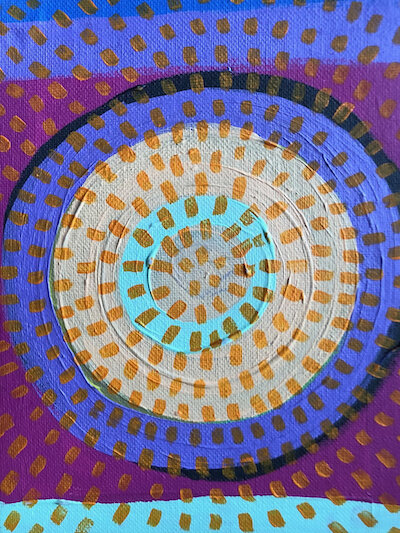
These acrylic paintings were created after the massacre in El Paso, Texas on August 3, 2019. A domestic terrorist traveled to El Paso to target Latinos he accused of invading America. With the rise of anti-Latino rhetoric from politicians and the rise of anti-Latino hate crimes in the United States, I, like so many Latinos, felt like a target. I painted a series of targets because I wanted to reflect on a climate in which anti-latino and anti-immigrant rhetoric was creating hostile and deadly situations for people in the United States.
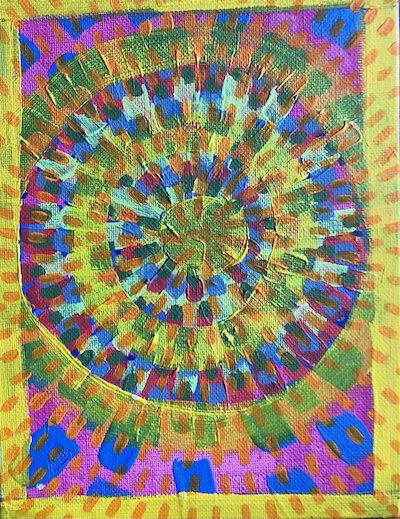
These works were created after the massacre in El Paso, Texas on August 3, 2019. A domestic terrorist traveled to El Paso to target Latinos he accused of invading America. With the rise of anti-Latino rhetoric from politicians and the rise of anti-Latino hate crimes in the United States, I, like so many Latinos, felt like a target. I painted a series of targets because I wanted to reflect on a climate in which anti-latino and anti-immigrant rhetoric was creating hostile and deadly situations for people in the United States.

These works were created after the massacre in El Paso, Texas on August 3, 2019. A domestic terrorist traveled to El Paso to target Latinos he accused of invading America. With the rise of anti-Latino rhetoric from politicians and the rise of anti-Latino hate crimes in the United States, I, like so many Latinos, felt like a target. I painted a series of targets because I wanted to reflect on a climate in which anti-latino and anti-immigrant rhetoric was creating hostile and deadly situations for people in the United States.
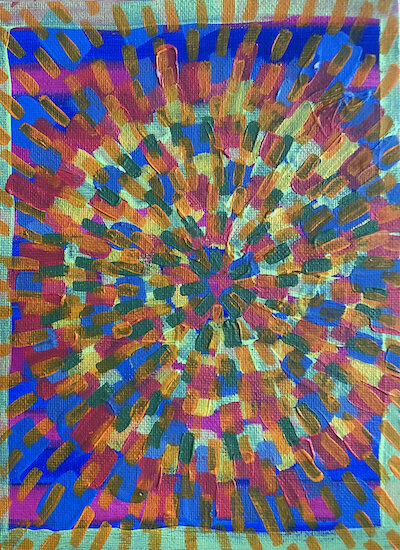
These works were created after the massacre in El Paso, Texas on August 3, 2019. A domestic terrorist traveled to El Paso to target Latinos he accused of invading America. With the rise of anti-Latino rhetoric from politicians and the rise of anti-Latino hate crimes in the United States, I, like so many Latinos, felt like a target. I painted a series of targets because I wanted to reflect on a climate in which anti-latino and anti-immigrant rhetoric was creating hostile and deadly situations for people in the United States.
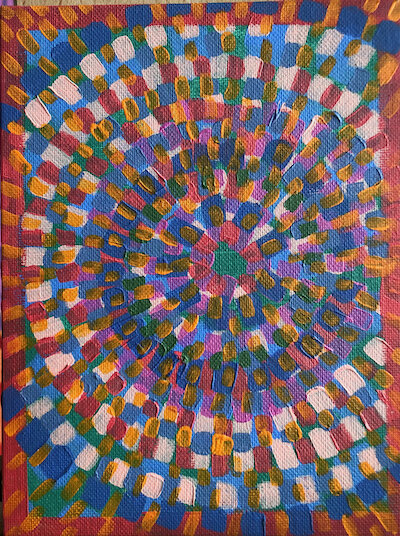
These works were created after the massacre in El Paso, Texas on August 3, 2019. A domestic terrorist traveled to El Paso to target Latinos he accused of invading America. With the rise of anti-Latino rhetoric from politicians and the rise of anti-Latino hate crimes in the United States, I, like so many Latinos, felt like a target. I painted a series of targets because I wanted to reflect on a climate in which anti-latino and anti-immigrant rhetoric was creating hostile and deadly situations for people in the United States.
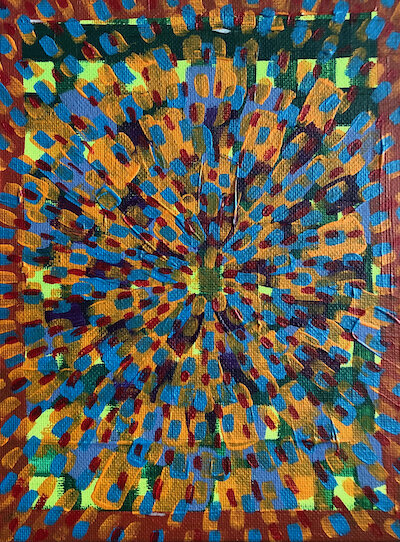
These works were created after the massacre in El Paso, Texas on August 3, 2019. A domestic terrorist traveled to El Paso to target Latinos he accused of invading America. With the rise of anti-Latino rhetoric from politicians and the rise of anti-Latino hate crimes in the United States, I, like so many Latinos, felt like a target. I painted a series of targets because I wanted to reflect on a climate in which anti-latino and anti-immigrant rhetoric was creating hostile and deadly situations for people in the United States.

These works were created after the massacre in El Paso, Texas on August 3, 2019. A domestic terrorist traveled to El Paso to target Latinos he accused of invading America. With the rise of anti-Latino rhetoric from politicians and the rise of anti-Latino hate crimes in the United States, I, like so many Latinos, felt like a target. I painted a series of targets because I wanted to reflect on a climate in which anti-latino and anti-immigrant rhetoric was creating hostile and deadly situations for people in the United States.
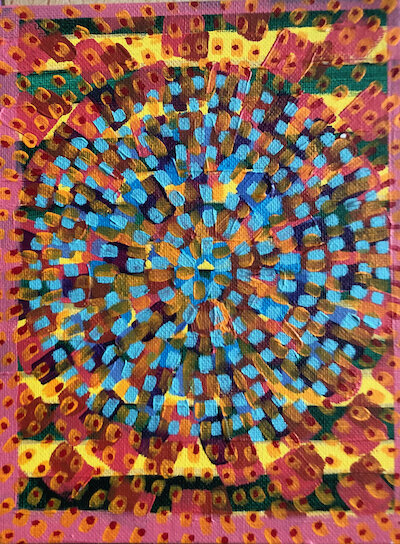
These works were created after the massacre in El Paso, Texas on August 3, 2019. A domestic terrorist traveled to El Paso to target Latinos he accused of invading America. With the rise of anti-Latino rhetoric from politicians and the rise of anti-Latino hate crimes in the United States, I, like so many Latinos, felt like a target. I painted a series of targets because I wanted to reflect on a climate in which anti-latino and anti-immigrant rhetoric was creating hostile and deadly situations for people in the United States.
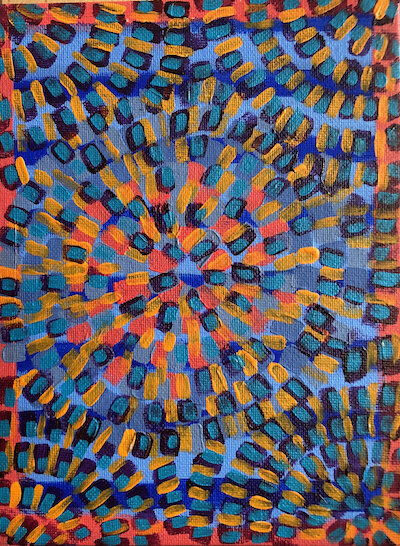
These works were created after the massacre in El Paso, Texas on August 3, 2019. A domestic terrorist traveled to El Paso to target Latinos he accused of invading America. With the rise of anti-Latino rhetoric from politicians and the rise of anti-Latino hate crimes in the United States, I, like so many Latinos, felt like a target. I painted a series of targets because I wanted to reflect on a climate in which anti-latino and anti-immigrant rhetoric was creating hostile and deadly situations for people in the United States.
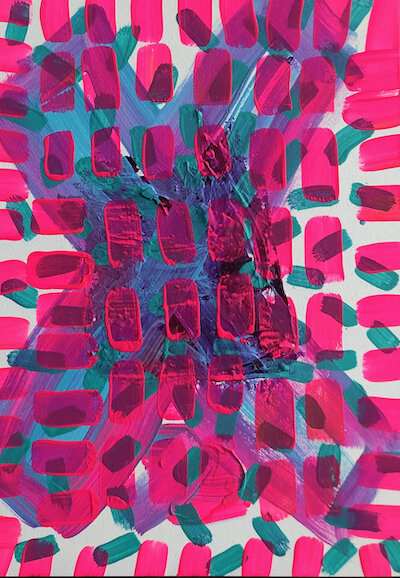
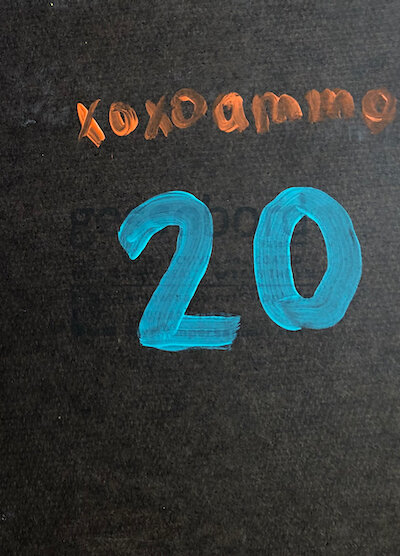
Painted on premium archival Ampersand Gessoboard. Made in the USA.
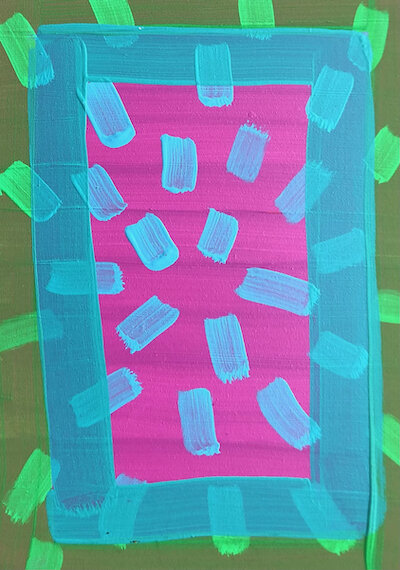
Painted on premium archival Ampersand Gessoboard. Made in the USA.
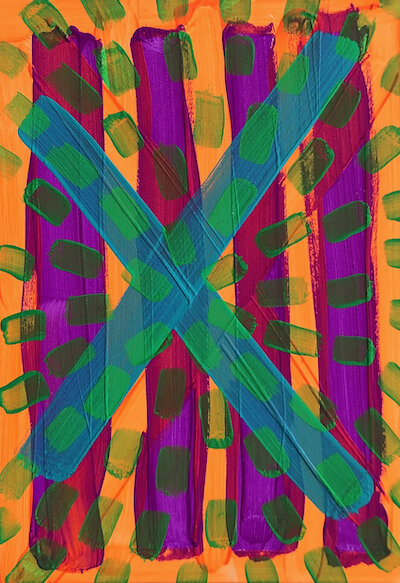
Painted on premium archival Ampersand Gessoboard. Made in the USA.
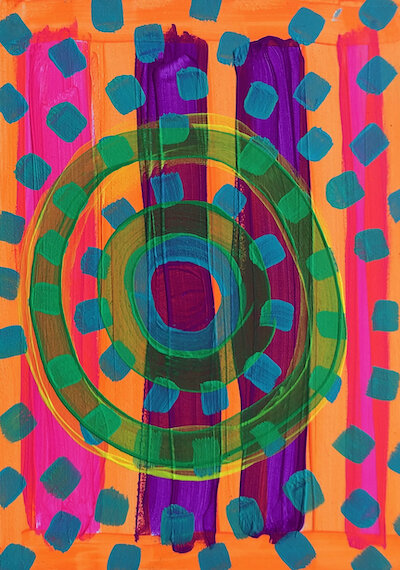
Painted on premium archival Ampersand Gessoboard. Made in the USA.
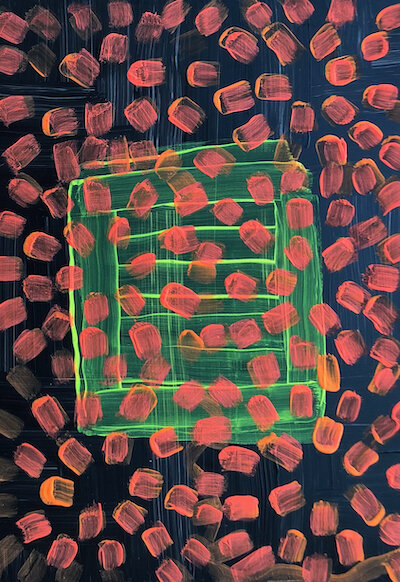
This painting is made on Yupo paper, a synthetic paper, machine-made in the USA of 100% polypropylene.
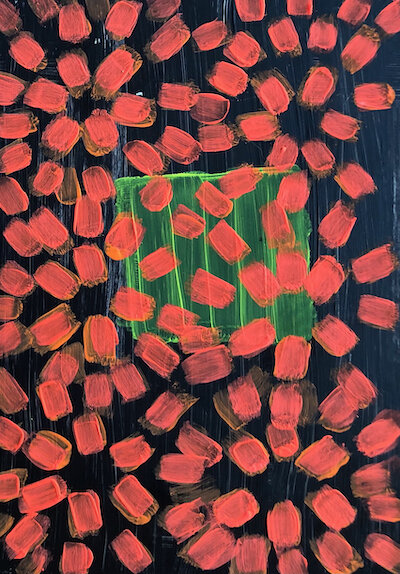
This painting is made on Yupo paper, a synthetic paper, machine-made in the USA of 100% polypropylene.

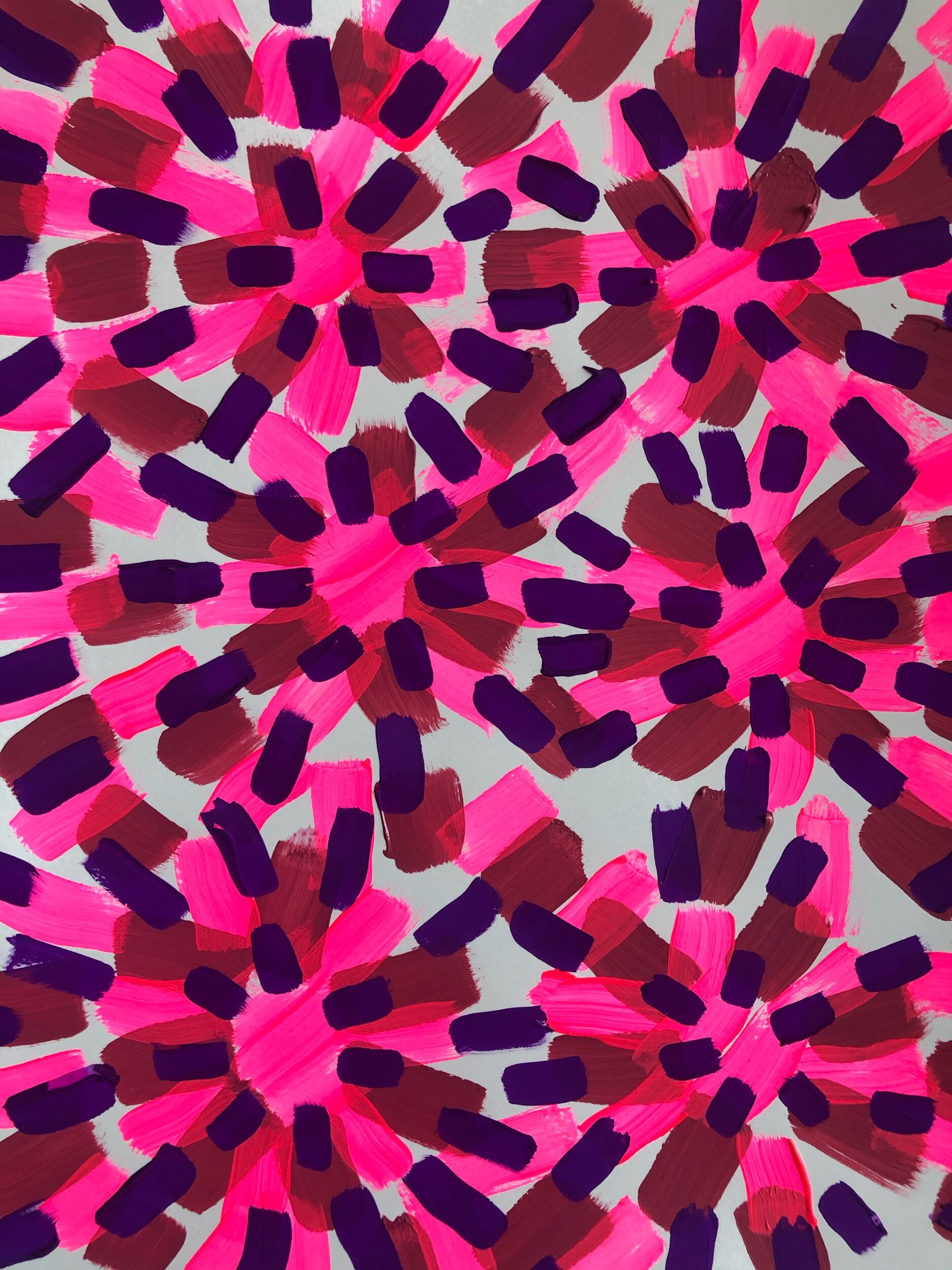
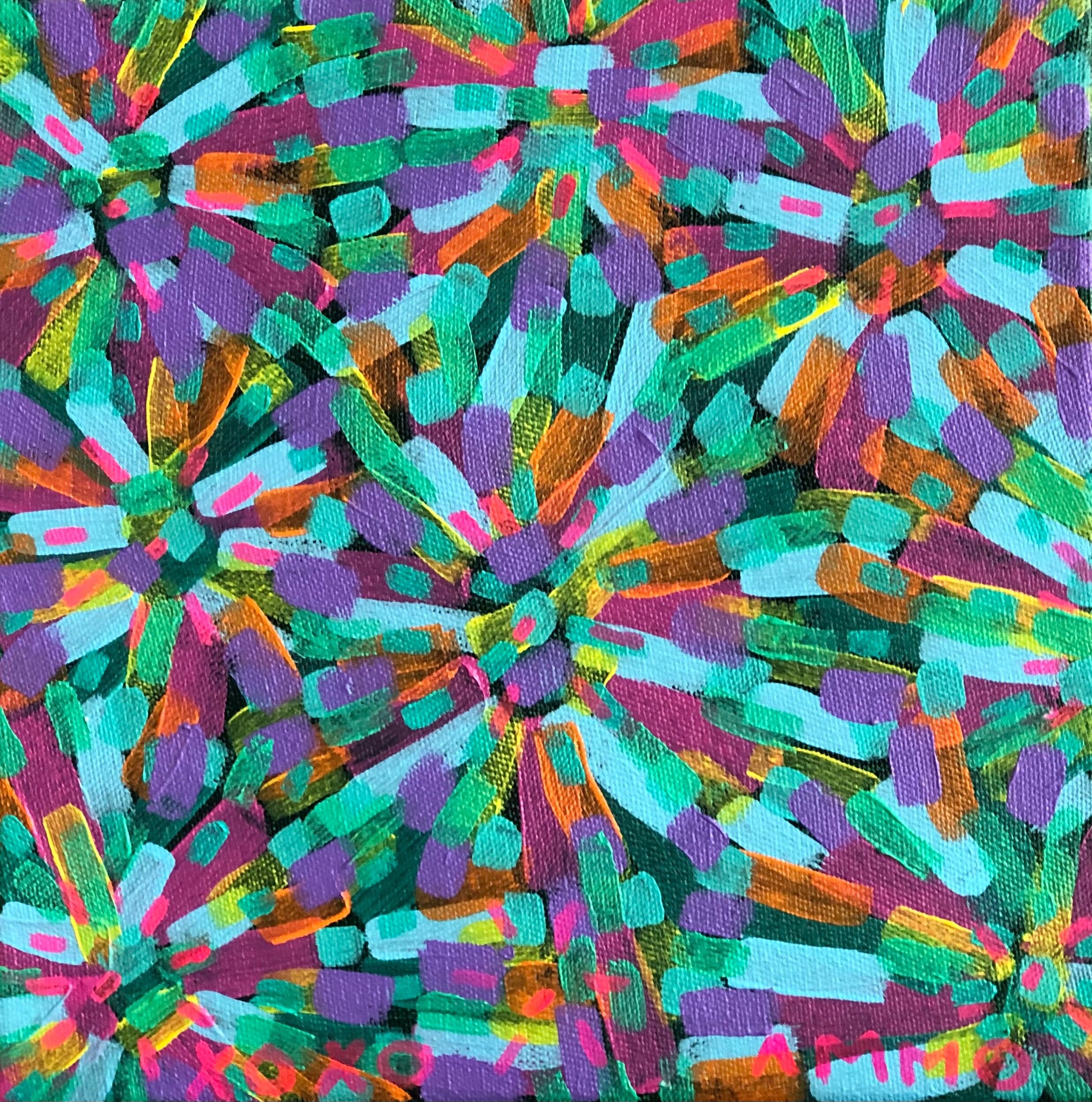
Chispas painting
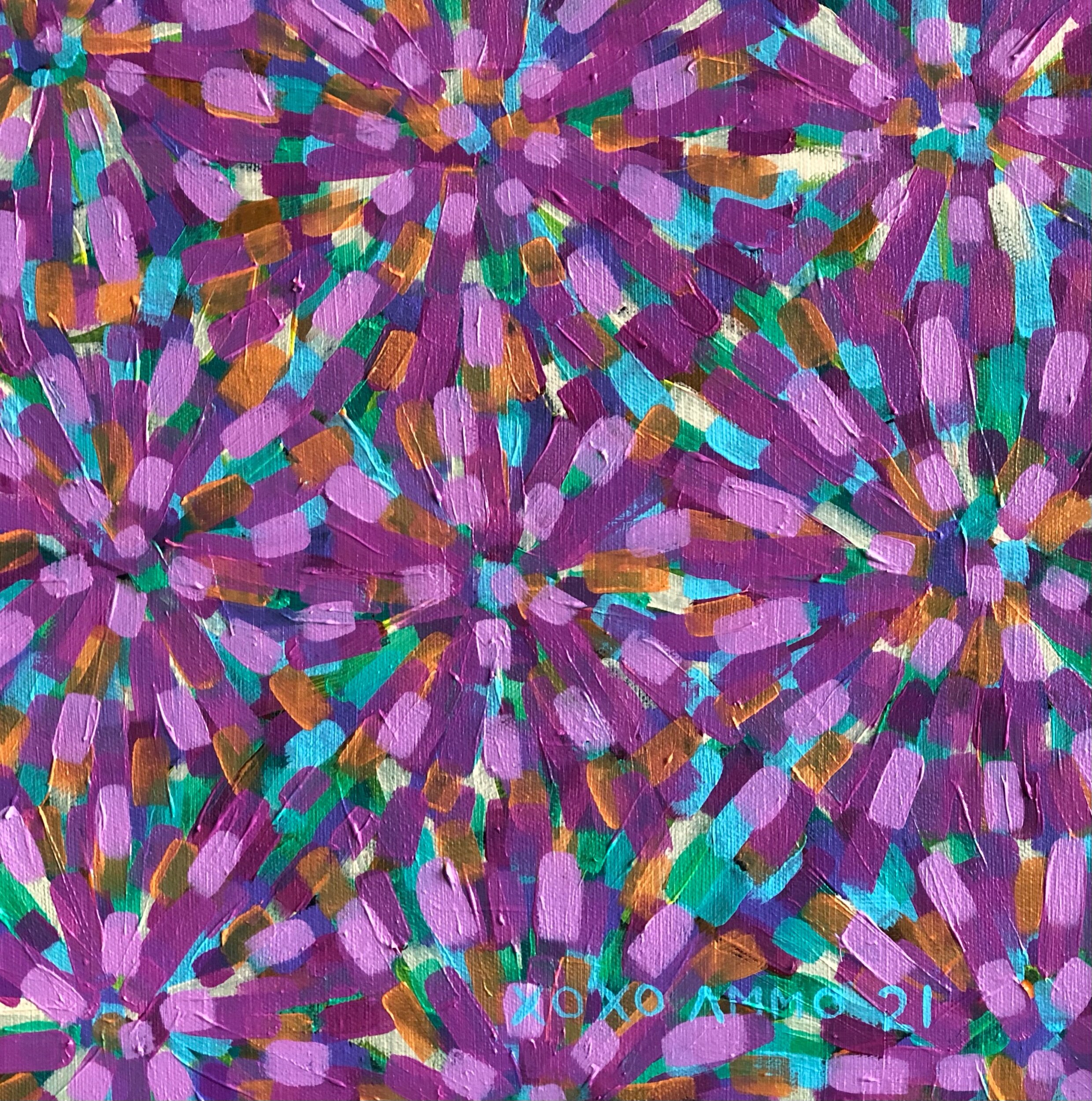
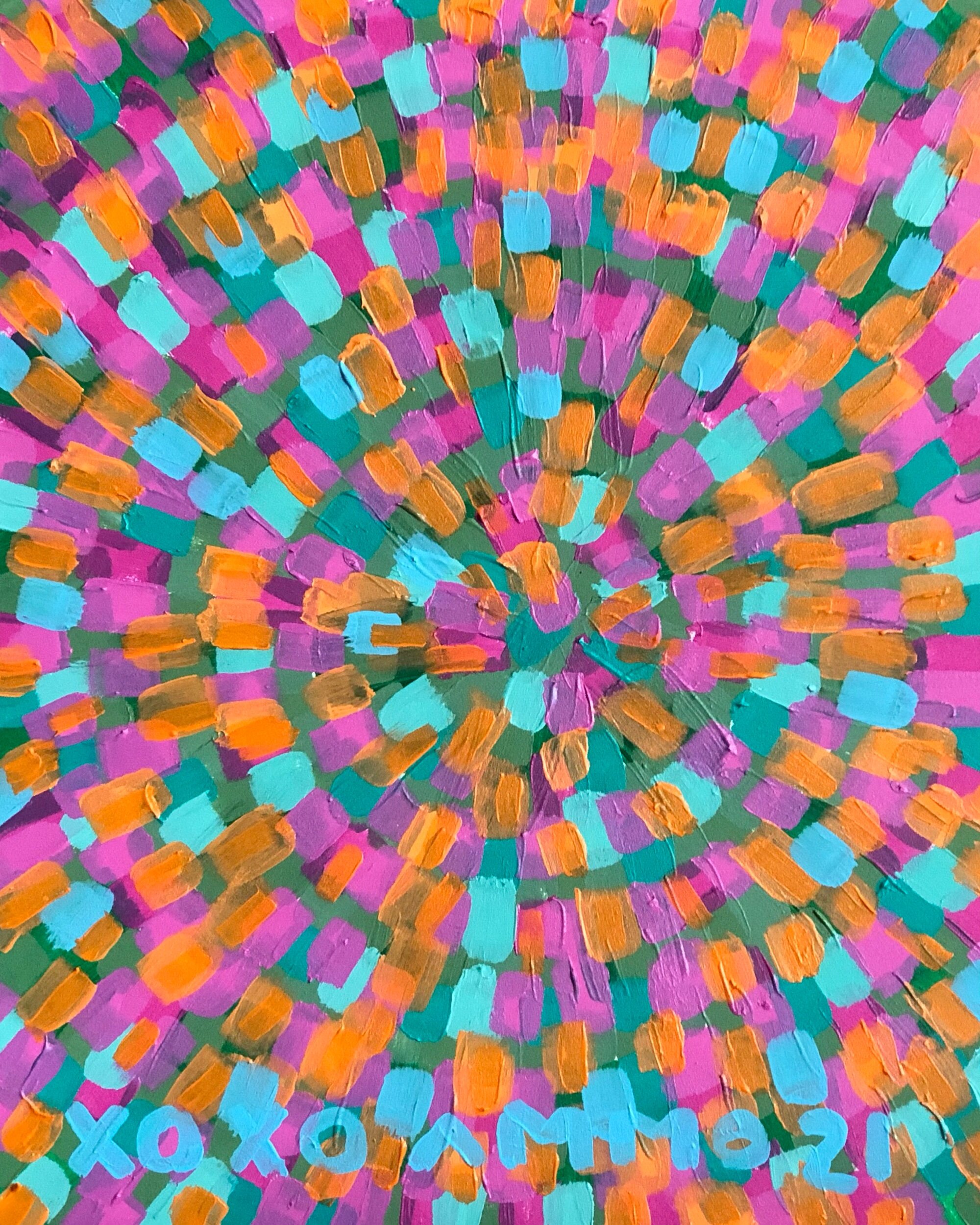
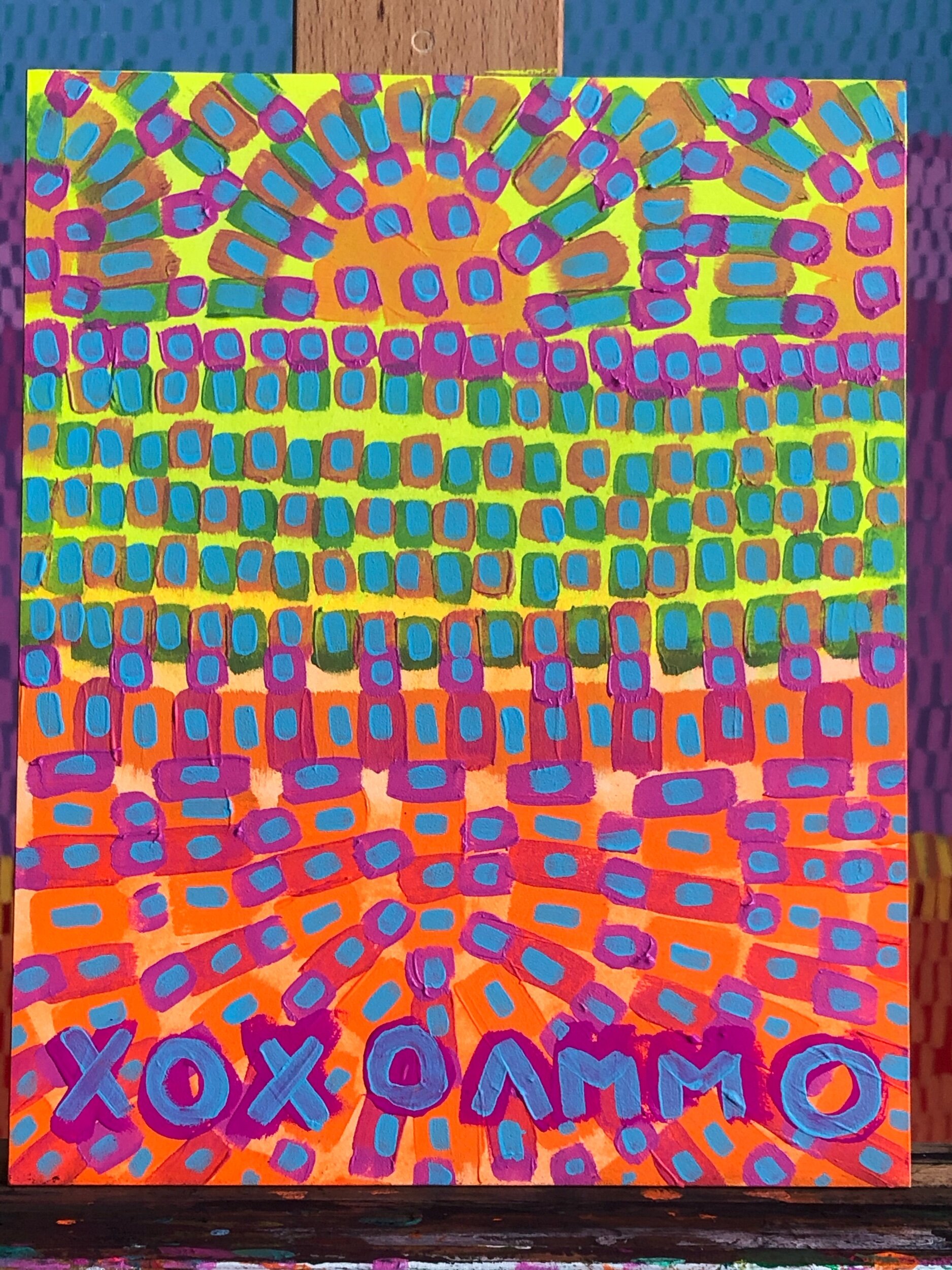
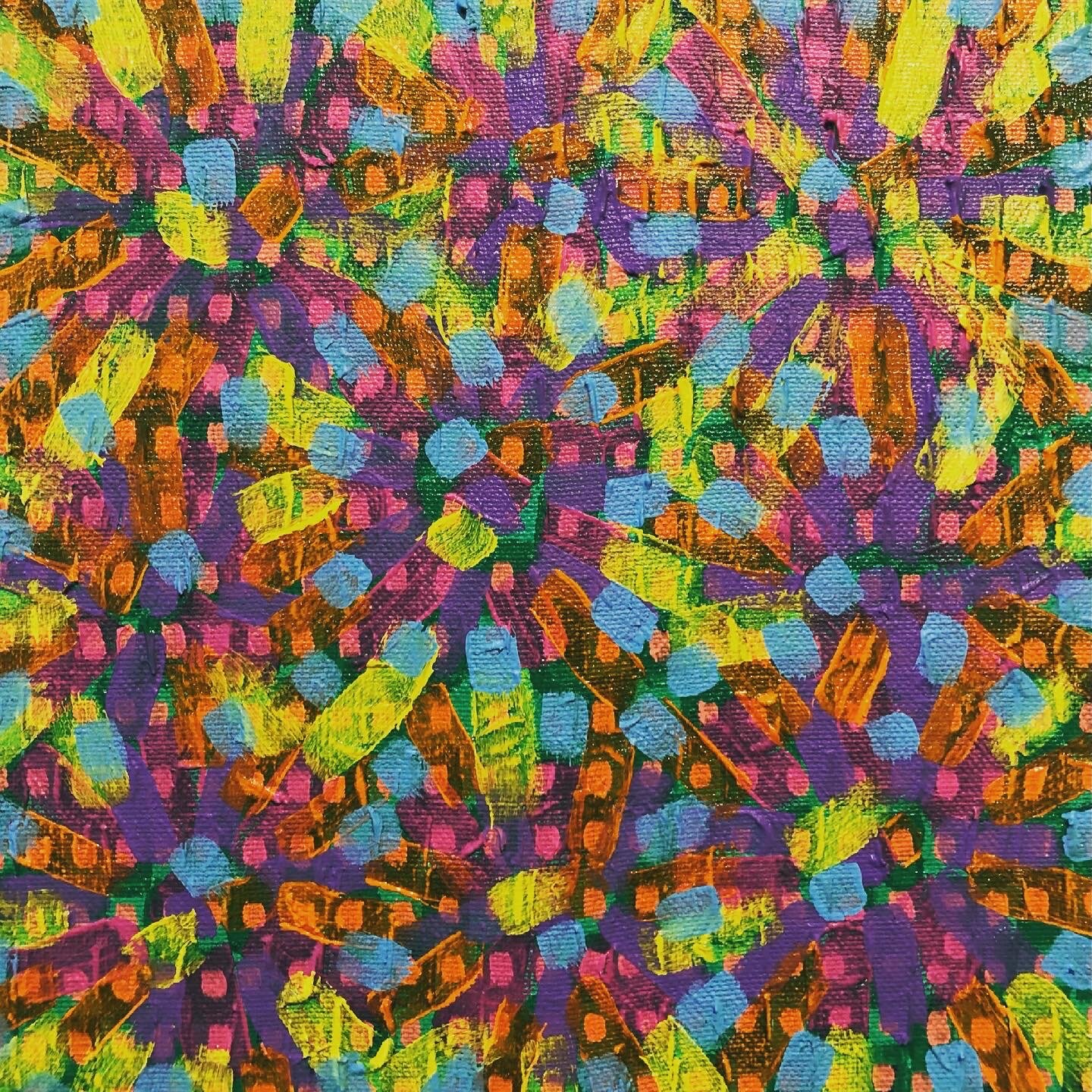











































The paintings depicting radial patterns represent sparks from a gun, flowers to honor a loved one, surveillance on the border, and the energy that is expressed when a border is crossed, built or destroyed. I make paintings of chispas, or sparks, in response to the history of anti-Mexican violence in Texas. These paintings are a reflection of my energy and the energy exerted when a spark is made, and the positivity that is created within communities to shield one another from hostility, prejudice, judgement, or daily struggles.
This painting was made with a few rules. I chose to use one brush size to make many marks that follow one radial shape or pattern. Keeping these things consistent allows me to explore the possibilities of color. The pink color scheme is a reference to my grandmother and the pink clothes that she wore, the pink bubble gum she gave us, the pink cake she loved and the pink roses in her garden. This painting is a reflection of my energy and the energy exerted when a spark is made. Chispas is a word for spark.
A painting to honor my family’s tradition of decorating our ancestor’s graves with the symbolic cempasuchil for Dia De Los Muertos.
Inspired by the satellite images of gas flaring in the Eagle Ford Shale in Texas.
These acrylic paintings were created after the massacre in El Paso, Texas on August 3, 2019. A domestic terrorist traveled to El Paso to target Latinos he accused of invading America. With the rise of anti-Latino rhetoric from politicians and the rise of anti-Latino hate crimes in the United States, I, like so many Latinos, felt like a target. I painted a series of targets because I wanted to reflect on a climate in which anti-latino and anti-immigrant rhetoric was creating hostile and deadly situations for people in the United States.
8 x 6 in. (8 x 10 in. with matte board), Acrylic on Canvas Board, 2019, $100
These acrylic paintings were created after the massacre in El Paso, Texas on August 3, 2019. A domestic terrorist traveled to El Paso to target Latinos he accused of invading America. With the rise of anti-Latino rhetoric from politicians and the rise of anti-Latino hate crimes in the United States, I, like so many Latinos, felt like a target. I painted a series of targets because I wanted to reflect on a climate in which anti-latino and anti-immigrant rhetoric was creating hostile and deadly situations for people in the United States.
These acrylic paintings were created after the massacre in El Paso, Texas on August 3, 2019. A domestic terrorist traveled to El Paso to target Latinos he accused of invading America. With the rise of anti-Latino rhetoric from politicians and the rise of anti-Latino hate crimes in the United States, I, like so many Latinos, felt like a target. I painted a series of targets because I wanted to reflect on a climate in which anti-latino and anti-immigrant rhetoric was creating hostile and deadly situations for people in the United States.
These acrylic paintings were created after the massacre in El Paso, Texas on August 3, 2019. A domestic terrorist traveled to El Paso to target Latinos he accused of invading America. With the rise of anti-Latino rhetoric from politicians and the rise of anti-Latino hate crimes in the United States, I, like so many Latinos, felt like a target. I painted a series of targets because I wanted to reflect on a climate in which anti-latino and anti-immigrant rhetoric was creating hostile and deadly situations for people in the United States.
These acrylic paintings were created after the massacre in El Paso, Texas on August 3, 2019. A domestic terrorist traveled to El Paso to target Latinos he accused of invading America. With the rise of anti-Latino rhetoric from politicians and the rise of anti-Latino hate crimes in the United States, I, like so many Latinos, felt like a target. I painted a series of targets because I wanted to reflect on a climate in which anti-latino and anti-immigrant rhetoric was creating hostile and deadly situations for people in the United States.
These acrylic paintings were created after the massacre in El Paso, Texas on August 3, 2019. A domestic terrorist traveled to El Paso to target Latinos he accused of invading America. With the rise of anti-Latino rhetoric from politicians and the rise of anti-Latino hate crimes in the United States, I, like so many Latinos, felt like a target. I painted a series of targets because I wanted to reflect on a climate in which anti-latino and anti-immigrant rhetoric was creating hostile and deadly situations for people in the United States.
These works were created after the massacre in El Paso, Texas on August 3, 2019. A domestic terrorist traveled to El Paso to target Latinos he accused of invading America. With the rise of anti-Latino rhetoric from politicians and the rise of anti-Latino hate crimes in the United States, I, like so many Latinos, felt like a target. I painted a series of targets because I wanted to reflect on a climate in which anti-latino and anti-immigrant rhetoric was creating hostile and deadly situations for people in the United States.
These works were created after the massacre in El Paso, Texas on August 3, 2019. A domestic terrorist traveled to El Paso to target Latinos he accused of invading America. With the rise of anti-Latino rhetoric from politicians and the rise of anti-Latino hate crimes in the United States, I, like so many Latinos, felt like a target. I painted a series of targets because I wanted to reflect on a climate in which anti-latino and anti-immigrant rhetoric was creating hostile and deadly situations for people in the United States.
These works were created after the massacre in El Paso, Texas on August 3, 2019. A domestic terrorist traveled to El Paso to target Latinos he accused of invading America. With the rise of anti-Latino rhetoric from politicians and the rise of anti-Latino hate crimes in the United States, I, like so many Latinos, felt like a target. I painted a series of targets because I wanted to reflect on a climate in which anti-latino and anti-immigrant rhetoric was creating hostile and deadly situations for people in the United States.
These works were created after the massacre in El Paso, Texas on August 3, 2019. A domestic terrorist traveled to El Paso to target Latinos he accused of invading America. With the rise of anti-Latino rhetoric from politicians and the rise of anti-Latino hate crimes in the United States, I, like so many Latinos, felt like a target. I painted a series of targets because I wanted to reflect on a climate in which anti-latino and anti-immigrant rhetoric was creating hostile and deadly situations for people in the United States.
These works were created after the massacre in El Paso, Texas on August 3, 2019. A domestic terrorist traveled to El Paso to target Latinos he accused of invading America. With the rise of anti-Latino rhetoric from politicians and the rise of anti-Latino hate crimes in the United States, I, like so many Latinos, felt like a target. I painted a series of targets because I wanted to reflect on a climate in which anti-latino and anti-immigrant rhetoric was creating hostile and deadly situations for people in the United States.
These works were created after the massacre in El Paso, Texas on August 3, 2019. A domestic terrorist traveled to El Paso to target Latinos he accused of invading America. With the rise of anti-Latino rhetoric from politicians and the rise of anti-Latino hate crimes in the United States, I, like so many Latinos, felt like a target. I painted a series of targets because I wanted to reflect on a climate in which anti-latino and anti-immigrant rhetoric was creating hostile and deadly situations for people in the United States.
These works were created after the massacre in El Paso, Texas on August 3, 2019. A domestic terrorist traveled to El Paso to target Latinos he accused of invading America. With the rise of anti-Latino rhetoric from politicians and the rise of anti-Latino hate crimes in the United States, I, like so many Latinos, felt like a target. I painted a series of targets because I wanted to reflect on a climate in which anti-latino and anti-immigrant rhetoric was creating hostile and deadly situations for people in the United States.
These works were created after the massacre in El Paso, Texas on August 3, 2019. A domestic terrorist traveled to El Paso to target Latinos he accused of invading America. With the rise of anti-Latino rhetoric from politicians and the rise of anti-Latino hate crimes in the United States, I, like so many Latinos, felt like a target. I painted a series of targets because I wanted to reflect on a climate in which anti-latino and anti-immigrant rhetoric was creating hostile and deadly situations for people in the United States.
Painted on premium archival Ampersand Gessoboard. Made in the USA.
Painted on premium archival Ampersand Gessoboard. Made in the USA.
Painted on premium archival Ampersand Gessoboard. Made in the USA.
Painted on premium archival Ampersand Gessoboard. Made in the USA.
This painting is made on Yupo paper, a synthetic paper, machine-made in the USA of 100% polypropylene.
This painting is made on Yupo paper, a synthetic paper, machine-made in the USA of 100% polypropylene.
Chispas painting
